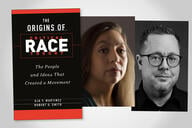You have /5 articles left.
Sign up for a free account or log in.
Academic dishonesty is not on the rise, James M. Lang argues, despite periodic media flurries suggesting otherwise in the wake of various high-profile cheating scandals. Data on cheating are typically self-reported, and may not be fully reliable, but there is no real reason to think that today's college students are any less honest than their predecessors.
Still, evidence indicates that most students cheat at least once over the course of their college careers -- a fact that may be most concerning, Lang writes, because it means that many classes are failing to help students really learn.
In his new book, Cheating Lessons: Learning From Academic Dishonesty (Harvard University Press), Lang reviews research on both academic dishonesty and human learning to build a case that the most effective instructional strategies to minimize cheating are the same ones that will best help students to understand and retain the course material. When students are able to grasp the subject matter, Lang believes, they have little motivation to cheat.
Lang -- who is associate professor of English and director of the Center for Teaching and Learning at Assumption College, as well as a longtime columnist for The Chronicle of Higher Education -- answered e-mailed questions about his new book, offering advice for both faculty members and administrators on how they can reduce cheating and, better yet, help students get the most out of their classes.
Q: How would you summarize the relationship between student learning and academic honesty (or dishonesty)? What do you think might explain this relationship?
A: Cheating is an inappropriate response to a learning environment that’s not working for the student. Both sides of that sentence are important. It’s inappropriate, which means that we have to hold the student accountable for the dishonest action, and ensure that we maintain high standards of academic integrity. But it’s equally true that something in that learning environment doesn’t seem to be working for that student. He might see the course as a curricular requirement that means nothing to him; he might be confused by the assignment or see it as busywork; he might see himself as not having the knowledge or skills he needs to complete the assignment.
While I certainly don’t believe we can track back all cases of cheating to problems in the teaching and learning environment — some students will cheat under even the best circumstances — I think we can at least learn from research on cheating whether there are specific features of a curriculum, or a course design, or an assessment structure that lend themselves to cheating. The fascinating discovery I made in my own research was that the features of a course that do tend to induce cheating were also ones that tend to reduce learning. So research on cheating may offer us a new window into how to improve the learning environments we build for our students.
Q: What are some common elements of college courses that tend to promote cheating, and why?
A: One line of research has looked at how learning orientation has an impact on students’ willingness to cheat. We can characterize some students as mastery-oriented in their learning, and some as performance-oriented. Mastery-oriented students have a real desire to learn and master the material; performance-oriented students want to do well on the assignments and exams, and are less concerned about the material for its own sake. We know that mastery-oriented students tend to learn the material more deeply than performance-oriented ones, and retain it longer, and we also know that mastery-oriented students cheat less. This makes a kind of intuitive sense; if the student really wants to learn and master the material, cheating will not help them do so.
But for me the crucial point about this research is that students are not locked into mastery or performance orientations that they carry from class to class; in fact, the design of the learning environment can nudge students toward mastery or performance orientations. The more choices and control you can give to students over how they will demonstrate their learning to you, the more you nudge them toward mastery learning. By contrast, if you force all students to jump through the same six hoops, you are sending the message that what matters are the hoops, not the learning. We should be engineering our assessment systems to ensure that students see our assignments and exams as opportunities to extend and demonstrate their learning, rather than as hurdles we make them jump over or duels we make them fight.
Q: You argue that intrinsic (as opposed to extrinsic) motivation is one of the most important factors in facilitating learning and reducing academic dishonesty. How can faculty members (and especially those teaching large introductory courses) promote intrinsic motivation in their students?
A: The argument I begin to make in the book, and have been developing further in my current research, is that we should build our courses around problems, questions, and challenges. Too often we think about courses as “covering” material. As plenty of people have pointed out, though, just because you are covering something doesn’t mean that the students are learning it! By contrast, if you can draw students into a course by opening with a fascinating question or problem, or posing them a significant challenge, and then help them understand how the course material will help them answer that question or solve that problem or meet that challenge, you are going to tap into their sense of intrinsic motivation.
Offering students these kinds of problems, questions, or challenges can happen at the level of the curriculum (in the form of linked courses or programs centered around a major theme), at the level of whole course design, or at the level of individual course units or assignments. But I think every day we are preparing to step into a classroom, we have to ask ourselves this question, and be ready to answer it: Why should students care about this material? And when we link our material to real and fascinating problems or questions — the types of problems or questions we tackle in our own research — then it becomes easier to help our students learn to care about our courses.
Q: What is the relationship between cheating and "metacognition"? How can instructors improve their students' metacognition?
A: Some students cheat because they have poor metacognition — that is, they have an inaccurate picture of their own understanding of the course material. Typically they overestimate their understanding, which leads them to underprepare. Then they find themselves in front of a test or in the eleventh hour before an assignment is due, and they realize that they are in serious trouble. That leads to certain types of cheating — looking at your neighbor’s paper, pulling out your smart phone in an exam, or last-minute plagiarism. So the more we can help students gain an accurate picture of their understanding of a topic, the more we can help them avoid this temptation.
Without question, the best means of improving student metacognition is with frequent, low-stakes assessments. Whatever you are going to ask students to do on their graded assessments, give them the opportunity to try smaller, low-stakes versions in class or on homework assignments before they have to ramp up and try for the grade. Given enough such opportunities, and some form of feedback from the faculty member, even if it's just orally in class, the students will gain a much clearer picture of their understanding or skill level.
Q: Does "flipping the classroom" tend to reduce cheating? If so, how?
A: The book does include an analysis of one group of physicists at MIT who flipped their classroom in order to reduce cheating on homework problems, and it did have exactly the impact they wanted — it produced very substantial results. It also reduced the failure/dropout rate in the course, which provides that nice connection between reduced cheating and more learning.
To my mind, specific classroom practices and techniques are less important than course design. As much as possible, when it comes to academic dishonesty, we should keep our eyes focused on the design of the course and the assessment system. For example, one of the arguments I have made elsewhere is to design what I call "grounded" assessments, ones that ask students to tackle problems or questions in the immediate environment of the campus or the local community. In addition to the potential that such assignments have to tap into intrinsic motivation, they also make cheating much more difficult. If we can use such assignments to convince students that our courses matter, and give them authentic and interesting assignments, we will go a long way toward reducing cheating.
Q: What are the most important things that administrators can do to help reduce cheating on their campuses?
A: Support their faculty, first and foremost. The research clearly suggests that faculty inconsistently report instance of cheating in their courses, and the most frequent explanation they give for that is that they find administrators siding with students over faculty, or they find the bureaucratic procedures required to pursue a case of academic dishonesty incredibly time-consuming. This is especially true for adjunct faculty, who are already overburdened and underpaid, and who might feel that accusing students of cheating will jeopardize their status on campus.
Administrators need to put into place support systems that take every case of cheating seriously, and that enable faculty to continue doing their regular work while cheating cases are investigated. A central office should be held responsible for collecting and maintaining a file of all cases of suspected cheating on campus, which helps ensure that serial cheaters are caught and punished. Equally important, as long as strong support systems are in place, faculty should report every case of suspected cheating they discover, in order to ensure that students can’t cheat in multiple classes without getting caught.
Q: What are some key principles that faculty members should keep in mind when responding to students suspected of cheating?
A: Don’t take it personally. Students cheat on assignments or exams; they don’t cheat on you. I know well from personal experience that this can be incredibly difficult. Whenever I encounter a case of plagiarism in one of my courses, my first reaction is an emotional one: “What made you think you could get away with this? Do you think I’m an idiot?” And I get angry. But we usually don’t make good decisions from anger, and I think that principle applies here. If it’s the first case of cheating for that student, it can become a learning opportunity; make the student do the work honestly, and help them understand what they did wrong and why it matters. But if the students has cheated more than once, don't let that get to you either; send them to the office on campus that handles such disciplinary offenses and get back to your work.
Q: In what ways have you changed your own courses since you began doing research for this book? What impact, if any, have these changes had?
A: I have been writing about teaching and learning for a long time — so long, in fact, that I found in recent years I had become pretty settled in my approach to course design and classroom practice. I would read or write about new techniques or approaches from other faculty, and think they were interesting, but not bother to apply them to my own courses. That all changed with this book. In order to understand why certain types of courses or assignments might lend themselves to greater cheating or less learning, I had to do some research in what cognitive theorists and brain scientists tell us about how human beings learn, and about what types of learning environments seem to replicate most naturally the conditions in which our brains have evolved to learn.
That research, which I summarize in the book, forced me to take a close and hard look at my own teaching practices, and see whether they aligned with what those cognitive theorists were telling me about how we learn. And I found that, in many ways, they did not. So beginning this year I have reframed my courses around big questions that I hope will capture the interest of my students, and I have redesigned my assessments systems in order to give students more choices in how they demonstrate their learning to me. I have become much more transparent in how I speak to students about the course and its assignments, trying to help them understand the value of each assignment and how it contributes to our bigger course questions. I have really restructured my teaching from the ground up as a result of this research.




